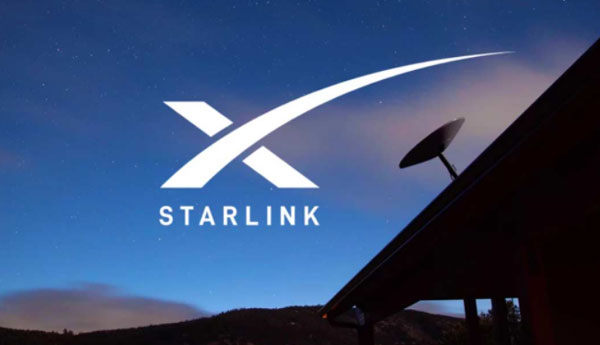
Vodacom Group is readying to introduce mobile satellite internet terminals – a service that would put the telco in direct competition with Starlink in a race to connect tens of millions of unserved and underserved mobile customers across Africa.
SPECIAL REPORT | BIRD AGENCY | The hope of getting hundreds of millions of users connected to high-speed mobile broadband in Africa’s remote and rural locations is inching closer, as competition in the satellite internet market intensifies.
Vodacom recently entered into a space previously reserved for Elon Musk’s SpaceX-owned satellite internet provider, Starlink, through a partnership with tech giant, Amazon, according to South African online tech platform, Ventureburn. The move would allow Vodacom to extend 4G and 5G services in Africa via satellite.
According to the tech platform, the partnership expands the South Africa-based telco portfolio to include serving individuals, residential places and businesses via customer terminals. This puts it in direct competition with Starlink, across a major section of its African footprint.
Vodacom will leverage on Amazon’s constellation of 3,236 satellites in low earth orbit (LEO) to connect cellular antennas in ‘geographically dispersed locations’ to its core telecom networks, under Amazon’s initiative, Project Kuiper.
The South African-based telco said the partnership gives it the ability to offer 4G/5G services in more locations without the time and expense of building out fibre-based or fixed wireless links back to the core networks – shifting the war into a race for customer numbers.
“Collaborating with Project Kuiper gives us an exciting new path to scale our efforts, using Amazon’s satellite constellation to quickly reach more customers across the African continent,” said Vodacom Group Chief Executive Officer, Shameel Joosub in a joint statement.
Barely three months ago, Vodacom through its parent company Vodafone, disclosed plans for a direct-to-smartphone satellite service that connects mobile phones to a data service without a modem, in a partnership with Texas-based AST SpaceMobile. Starlink is also planning to venture into this space, having planned tests with T-Mobile in the US, and it is still unclear when or if the service will be expanded to Africa.
GSMA’s State of Mobile Internet Connectivity 2022 shows the mobile coverage gap (areas not covered or connected) has reduced by more than 50% to 190 million people and usage (covered but not connected) by 14% to 680 million people over the last five years.
Mobile broadband investments have helped the region improve its network quality, with the biggest improvement seen in narrowing of the gap between 3G and 4G coverage from 45% in 2017 to 25% in 2021.
Despite these developments, Africa’s coverage gaps remain the largest in the world according to GSMA, due to slow growth in internet speeds and high cost of data, especially in the Sahara region.
“Network quality continues to improve, but download speeds are yet to exceed 10Mbps … Sub-Saharan Africa is the only region where the cost of 1GB of data as a percentage of monthly GDP per capita exceeds 2%,” said GSMA in the report.
The widest coverage gaps are in Central Africa, where 39% of the region’s population lives outside a mobile broadband coverage area, followed by West Africa (16%), East Africa (13%) and Southern Africa (12%).
In March 2023, Amazon unveiled a set of satellite receivers under Project Kuiper, targeting tens of millions of customers with customer terminals that will cost less than US$500.
Amazon’s smallest portable satellite terminal, offering speeds of up to 100Mbps, will be sold for US $100, while its standard customer terminal will go for less than US$400.
Vodafone, Vodacom, and Project Kuiper have also announced exploring a provision for backup services in case of unexpected events as well as connectivity expansion for remote infrastructure, as they prepare to test two prototype satellites with select customers by the end of 2024.
Vodacom operates in South Africa, Egypt, the Democratic Republic of Congo, Tanzania, Mozambique, Ethiopia and Sierra Leone, with more than 185 million customers.
Starlink, with 1.5 million subscribers, offers – through its Roam and Residential subscriptions – a more expensive service, starting at US$600.
The company’s satellite internet is available in Kenya, Nigeria, Rwanda and Mozambique. By year-end, the company is eyeing Chad, Mauritania, Angola, Namibia and Somalia. It is yet to get a licence to operate in South Africa.
*****
SOURCE: bird, story agency
 The Independent Uganda: You get the Truth we Pay the Price
The Independent Uganda: You get the Truth we Pay the Price



